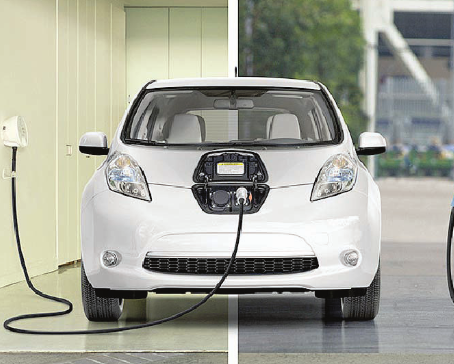Why Kenya is still not ready for electric cars

As the world accelerates toward electric mobility, Kenya finds itself at a crossroads—torn between ambition and reality. While electric motorcycles like the Roam Air and a few electric car models have found a foothold, the widespread adoption of electric vehicles (EVs) remains a distant dream.
Despite government incentives and a growing awareness of sustainable transport, the reality on the ground tells a different story. Kenya’s road to electrification is riddled with challenges that make the mass adoption of EVs more of a future possibility than a present reality.
The few that survive
A handful of electric cars have made their way onto Kenyan roads, proving that the concept is not entirely impractical. Among them, the Nissan Leaf, Hyundai Kona Electric, and the locally assembled public transport buses such as BasiGo, Roam Move and Roam Rapid have shown promise. Some taxi-hailing companies have also experimented with electric fleets, notably Nopea Ride, which introduced a fleet of Nissan Leafs before closing operations due to financial constraints.
While these cars offer a glimpse into the potential of EVs in Kenya, their presence is more of an exception than the norm. The reasons behind this slow adoption are deeply rooted in economic and infrastructural realities.
Country without charging infrastructure
One of the biggest challenges to EV adoption in Kenya is the lack of charging infrastructure. Unlike petrol stations, which are scattered across the country and provide quick refueling, EV charging stations are still a rarity. Nairobi has a handful of them, with some set up by Kenya Power during their launch of their adoption to EV campaign in 2024, but outside the capital, finding a charging point is nearly impossible.
This scarcity makes long-distance travel risky. Most EV owners rely on home charging, which works for daily commutes but offers no solution for highway travel. Companies like Roam and BasiGo have invested in charging stations for electric motorcycles and buses, yet the infrastructure for personal EVs remains inadequate. Until there is a reliable and accessible nationwide charging network, electric cars will struggle to compete with their petrol-powered counterparts.
The price barrier
For most Kenyans, the cost of an electric car is simply out of reach. The Hyundai Kona Electric, for instance, sells for over Sh5 million, a price far beyond the budget of the average middle-class car buyer. Even second-hand EVs, like the Nissan Leaf, still cost significantly more than a used petrol vehicle.
While the government has reduced excise duty on EVs from 20 per cent to 10 per cent to promote clean transport, other taxes and levies still make them expensive. A Kenyan looking to buy a personal vehicle is more likely to go for a Sh800,000 Toyota Vitz or Sh600,000 used Mazda Demio than an electric car that costs three to five times as much. The upfront cost remains a significant deterrent, and unless more affordable EV models enter the market, mass adoption will remain elusive.
Unreliable power grid
Even if electric cars were more affordable, Kenya’s electricity supply presents another challenge. While Kenya Power has the capacity to generate sufficient electricity for EVs with over 9.5 million households having power supply, frequent blackouts and unstable voltage pose serious concerns.
Owning an EV in a country where power outages are common means running the risk of getting stranded with a dead battery. While some homeowners have solar panels as a backup, the vast majority of Kenyans still rely on the national grid. Until the country can guarantee a more stable and reliable power supply, widespread EV adoption will remain impractical.
Mechanics are not ready
Kenya’s auto industry is deeply entrenched in internal combustion engine (ICE) vehicles. The vast network of local mechanics is well-versed in fixing a Toyota Probox, but very few have the expertise to diagnose and repair an electric motor or a failing battery system.
With limited knowledge and specialized training, servicing an EV becomes a complicated and expensive process. Unlike petrol cars, which can be fixed at nearly any garage, an electric car often requires manufacturer-trained technicians. This lack of expertise discourages many potential buyers, as they fear the high cost and inconvenience of maintaining an EV in a market that is not yet equipped for it.
The battery problem
Battery degradation is another major concern. EV batteries lose efficiency over time, and replacing them is expensive. A replacement battery for a Nissan Leaf can cost anywhere between Sh800,000 to Sh1.5 million, often as much as buying a second-hand petrol vehicle.
Kenya’s hot climate, coupled with the country’s preference for used imports, makes battery longevity a critical issue. Most EVs entering the country are already several years old, meaning their batteries are not at peak performance. When degradation sets in, owners are faced with an expensive replacement bill or a car that barely holds a charge. Without local battery recycling options or affordable replacement solutions, the EV market in Kenya faces yet another roadblock.
What needs to change?
While electric vehicles are not yet viable for most Kenyans, the country has the potential to make them a reality in the future. Expanding charging infrastructure across the country would go a long way in addressing range anxiety, while more government incentives—such as tax reductions and subsidies for local EV assembly—could help make them more affordable.
A more stable and reliable electricity supply would also encourage adoption, ensuring that EVs are not just a luxury for those with backup solar systems. Additionally, training more mechanics in EV repair and maintenance would reduce reliance on manufacturer service centers, making ownership more practical.
Battery recycling and local production could also provide a sustainable solution to the high cost of replacements. Countries like China and the U.S. are already investing in second-life battery markets, where used EV batteries are repurposed for energy storage. If Kenya could develop a similar ecosystem, it would help reduce the long-term costs of electric vehicle ownership.
For now, electric cars in Kenya remain more of a novelty than a practical alternative to petrol vehicles. While electric motorcycles and buses are leading the transition, personal EV ownership is still hindered by a lack of infrastructure, high costs, unreliable electricity, and insufficient technical expertise.
Unless these challenges are addressed, Kenya’s roads will continue to be dominated by petrol and diesel vehicles. The dream of a fully electrified transport system is not impossible, but it is one that requires strategic investments, policy changes, and a major shift in how the country approaches sustainable mobility. Until then, electric cars in Kenya will remain a vision for the future rather than a reality of the present.












